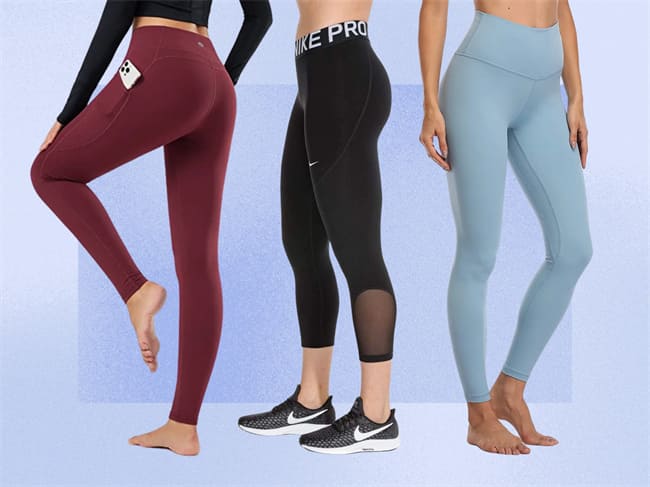Fashion is something that we all love, whether it’s the fashion of our clothes or the fashion of our hearts, it gives us a lot of joy for our souls.
Fashion offers us vibrant outfits, elegant accessories, and a means to express our individuality. However, the creation process often contributes to significant environmental harm and can involve serious human rights violations.
Fashion has gone far beyond design, as has the pervasive phenomenon of “greenwashing,” which is why it’s especially challenging to find sustainable swimwear that is ethical.

What is Sustainable & Ethical Fashion?
Sustainable and ethical fashion represents an approach to sourcing, manufacturing, and designing swimwear that seeks to benefit society and the broader fashion industry while minimizing environmental impact. These two concepts are in conflict to a certain extent, but on the whole, the only way to better combine fashion and the environment, in the long run, is to take both into account.
Sustainable fashion refers to the responsible manufacture, marketing, and utilization of clothing, footwear, and accessories, taking into account both environmental and socio-economic factors. This involves an ongoing effort to enhance all phases of a product’s lifecycle, spanning from design and raw material production to manufacturing, transport, storage, marketing, final sale, usage, and eventual recycling or repurposing.

The concept of sustainability emphasizes the ecological impact associated with sourcing, producing, and distributing an item. For apparel to be authentically sustainable, every stage of its supply chain must inflict minimal damage on the environment. This comprehensive approach incorporates various aspects such as procuring eco-friendly raw materials like ECONYL®, operating a manufacturing facility powered by renewable energy, and employing recycled paper for packaging during shipping. These concerted efforts contribute to a garment’s journey, right from its inception to the time it makes its way into your wardrobe.
What is Sustainable & Ethical swimwear?
Starting with the design, the selection of materials, and the processing techniques, it is important to use methods that are less polluting to the environment in order to produce sustainable swimwear.

Why it’s so important?
The development of fashion can affect the environment to a certain extent, destroying the balance of the environment and ultimately affecting ourselves. That is why it is very important to find a fashion for sustainable development.
Ethical Fashion
Ethical fashion often focuses on the human impact of a garment. Like sustainable fashion, every step of the supply chain needs to be considered, whether it’s the farmer growing the raw materials, the garment worker in the factory, or the sales assistant on the shop floor. Everyone involved in the process should be treated fairly and paid correctly.

Understanding Ethical & Sustainable Practices
A thriving fashion industry, which is beneficial for people and the planet, must integrate both sustainability and ethics. These two aspects are interdependent, and their synergistic success is vital for our planet’s future and its inhabitants. After all, issues like global warming, human rights, and animal rights are interconnected.
Unsound environmental practices invariably lead to human repercussions, signifying the intricate interconnection of all elements. For instance, chemicals from garment production contaminating rivers can endanger local food and crops. Improper recycling of plastic packaging results in microplastics infiltrating our water systems, and eventually our drinking water. Moreover, the adverse effects of global warming, including floods, fires, droughts, and storms, are already significantly impacting humanity.

As sustainability gains mainstream prominence, brands are finding it strategically wise to invest in zero-waste packaging and eco-friendly materials. However, this addresses only part of the problem, as sustainability cannot be fully realized without ethical considerations.
On the other hand, it is tied to an item’s origin, production process, usage, and end-of-life impact. Although societal norms influence our perception of right and wrong, ethics remain largely personal. Our values guide our choices, molding our personal moral code. In the realm of fashion, this code directs our non-negotiable decisions, such as favoring vegan materials like jute, organic cotton, modal, or lyocell fibers. Our values also assist in making more intricate ethical choices.
In the future, we anticipate that fashion brands will equally prioritize sustainability and ethics. Achieving this balance can pave the way for an industry that positively impacts both people and the planet.

Confusion
The sectors of sustainable and ethical fashion have gained substantial momentum, transforming into major industries. The global market, valued at $6.35 billion in 2019, is forecasted to expand to $8.25 billion by 2023, and further escalate to a whopping $15.17 billion by 2030. However, the terms ‘sustainable’ and ‘ethical’ currently hold no legal definitions, which allows for their unregulated usage without substantial evidence of compliance. While these terms are frequently used synonymously, leading to potential consumer confusion, it’s crucial to emphasize their separate significance. Both sustainability and ethics need to be valued equally in the fashion industry as they are mutually inclusive, with one being incomplete without the other.

Embracing Sustainability
While transitioning to sustainability can be challenging, it’s essential to understand the principles of genuinely sustainable and ethical swimwear production.
Every year, approximately 26 billion pounds of textile waste are dumped in landfills, taking centuries to decompose. Conventional swimwear production often involves toxic dyes and chemicals that pollute water sources. So how can you be more sustainable?
- Choose eco-friendly, sustainable textiles like organic cotton, hemp, linen, wool, bamboo, Tencel, and more.
- Utilize recycled fabric in your swimwear line.
- Secure certification from GOTS, assuring your textiles are environmentally friendly.
- Opt for natural dyes. Various plants and food items, such as coffee, turmeric, and indigo, can provide safe, vibrant dyes.
- Creating a Responsible Production Ecosystem
- Ensure your business practices are ethical by collaborating with reputable manufacturers. If a personal visit isn’t feasible, consider arranging an independent audit via organizations like Qualspec. Ensure your employees receive fair wages and work in safe conditions – a basic human right often ignored in the fashion industry.

Regarding sustainable production, inquire about your suppliers’ methods. For example, if dyeing fabrics, prioritize suppliers using a closed-loop process that prevents wastewater and harmful dye release.
At Best Show, we pride ourselves on providing eco-friendly swimwear. Besides our materials, we employ eco-inks for our prints.
In addition to creating ethical businesses and sustainable products, companies should strive to:
Utilize zero-waste packaging
Consider compostable shipping materials like tags and sleeves. Even better, use packaging that customers can return and reuse.
Donate and Effect Change
The objective of your swimwear manufacturing business is to share your unique fashion ideas and generate profit. If you’re also committed to making a positive impact on the world, consider donating to charities or supporting initiatives and events.

6 criteria of sustainable fashion
Here are 6 criteria for sustainable fashion that we must adhere to.
- Eco-friendly Materials
- Supply Chain & Worker Rights
- Reducing Carbon & Commitments
- Eco-Friendly Business Practices
- Inclusivity & Diversity
- Community Involvement & Charity
1. Eco-friendly Materials
Materials greatly affect an item’s environmental impact, so choosing eco-friendly fabrics is crucial.
Here are the key features of sustainable materials:
- Natural, organic blends that make the final product compostable.
- If synthetics are used, they should be recyclable.
- Durable, fit for long-term use.
- Safe, non-toxic dyes.
- Certified as organic, recycled, or non-toxic.
Sustainable materials are typically natural, semi-synthetic, or recycled synthetic.

Natural Fibers
Natural fibers with minimal processing like organic or recycled cotton, hemp, linen, and bamboo are good options. Animal-based fibers, although not vegan, can also be sustainable if ethically sourced.
Cellulose or Semi-Synthetic Fibers
These are natural fibers transformed into fabric via a chemical method. Depending on the process, these can be sustainable. For example, TENCEL™ lyocell and modal fabric and certain kinds of vegan leather fall into this category.

Recycled Synthetic Fabrics
Turning waste into clothing, such as recycled polyester, nylon, and spandex, helps reduce pollution.
Sustainable Fabric Certifications
Third-party certifications ensure a fabric’s eco-friendliness. Some of the most common are GOTS, OEKO-TEX, USDA Organic, FSC, bluesign®, BCI, and GRS. However, remember that these can also be subject to greenwashing.

Eco-friendly Dyes
Even an organic cotton t-shirt can be unsustainable if it’s dyed with toxic substances and large amounts of water. Eco-friendly dyes, preferably azo-free, are therefore important. Look out for plant-based or non-toxic options and processes that conserve water.
2. Supply Chain & Worker Rights
Ensuring ethical practices throughout the entire supply chain is vital. Here’s what to look for:
Smaller, Controlled Supply Chains
Smaller supply chains are usually more manageable, allowing companies to maintain higher standards. Indicators of good supply chain control:
- Items made in the company’s base country or developed nations with strict labor regulations.
- Limited product lines, meaning a smaller supply chain.
- Use of small, family-run factories or artist cooperatives.
- Regular company audits and visits to their factories.

Transparency
Brands with large product lines should provide clear information about their sourcing and manufacturing. Knowing exactly where and how items are made and what workers earn leads to accountability and positive change. Despite efforts to increase transparency in the fashion industry, the average transparency score in 2022 was only 24%.
Labor Practices
Once a brand’s sourcing and business practices are known, we can assess their ethics. Companies must avoid greenwashing and meet ethical standards like the Social Accountability Standard International (SA8000). Beware of misleading practices and greenwashing, which can make it difficult to discern truly ethical companies.
Ethical Fashion Certifications
Third-party audits and certifications can confirm a company’s ethical stance. However, certifications should be paired with other transparency measures to cross-verify facts. Here are a few examples:
- B-Corporation: This certification requires businesses to meet high standards in 80 environmental and social “impact areas” annually.
- Fair Trade: Various organizations provide Fair Trade certifications, including the World Fair Trade Organization, Fair Trade USA, Fair Wear Foundation, and Fairtrade International.
- Worldwide Responsible Accredited Production (WRAP): This requires factories to adhere to 12 labor principles, promoting safe workplaces and sustainable practices.
- International Labour Organization (ILO), Ethical Trading Initiative (ETI), and Business Social Compliance Initiative (BSCI) also provide ethical certifications.

3. Reducing Carbon & Commitments
Reducing greenhouse gas emissions to net zero, or carbon neutrality, isn’t just nice to have; it’s crucial in our current climate crisis. Sustainable fashion must involve:
- Carbon reduction commitment: Brands must pledge to reduce carbon by investing in energy efficiencies. Big brands should have accountable Science Based Targets.
- Evidenced carbon reduction: Brands need to show continuous progress and actual reductions, not just targets.
- Carbon offsets: Brands should provide proof of their carbon offset programs and their impact. Some brands, like Tentree, Allbirds, Reformation, and Made Trade, set excellent examples.
More brands should aspire to be like Patagonia, with ambitious carbon goals and a strong plan to reduce emissions, not just offset them.

4. Eco-Friendly Business Practices
In addition to product impact, operational impact matters too. Brands can reduce their carbon footprint through:
- Quality products: Sustainable clothing should be durable. Look for brands using quality materials with a lifetime warranty.
- End-of-life options: Brands that offer repair, resale, or recycling programs take full responsibility for their product’s life cycle. Handmade production: Handcrafting reduces energy usage and preserves traditional methods.
- Handling waste: Small-batch or made-to-order manufacturing can prevent leftover garments. Unused fabrics should be repurposed.
- Resource management: Brands can utilize renewable energy, water, and waste reduction, or recycling. Office Policies: Sustainable companies implement recycling and composting and aim for low waste.
- Sustainable packaging: Look for recycled or compostable shipping materials.
- Shipping: Eco-friendly brands prefer shipping by sea and offset their shipping emissions. Other certifications, like LEED, show a commitment to sustainability.

5. Inclusivity & Diversity
It’s time for fashion to be inclusive. Ethical brands should offer plus-size and gender-neutral clothing. We prioritize brands that promote diversity in their marketing and model casting.
6. Community Involvement & Charity
Brands should prioritize people and the planet before profit. Ethical brands should use their profits to improve the world, from donating to charities to organizing events. The 1% for the Planet Program, founded by Patagonia’s Yvon Chouinard, is a well-regarded initiative that ensures brands reinvest 1% of annual profits into the environment. Be cautious of companies using charity as a facade for unethical practices.

Conclusion
The fashion industry is increasingly aligning with sustainable development and ethical practices. It’s crucial to consider both these aspects equally, as they’re mutually dependent. While ‘sustainable’ and ‘ethical’ are often used interchangeably, they actually represent distinct facets of responsible fashion. Sustainability focuses on the environmental impact of an item’s lifecycle, while ethics refers to responsible behavior in terms of the item’s production, usage, and end-of-life impact. Both of these aspects together form the foundation for a fashion industry that positively contributes to people and the planet.
We can only get along well with the environment and be healthy if we do a good job in a sustainable fashion.




